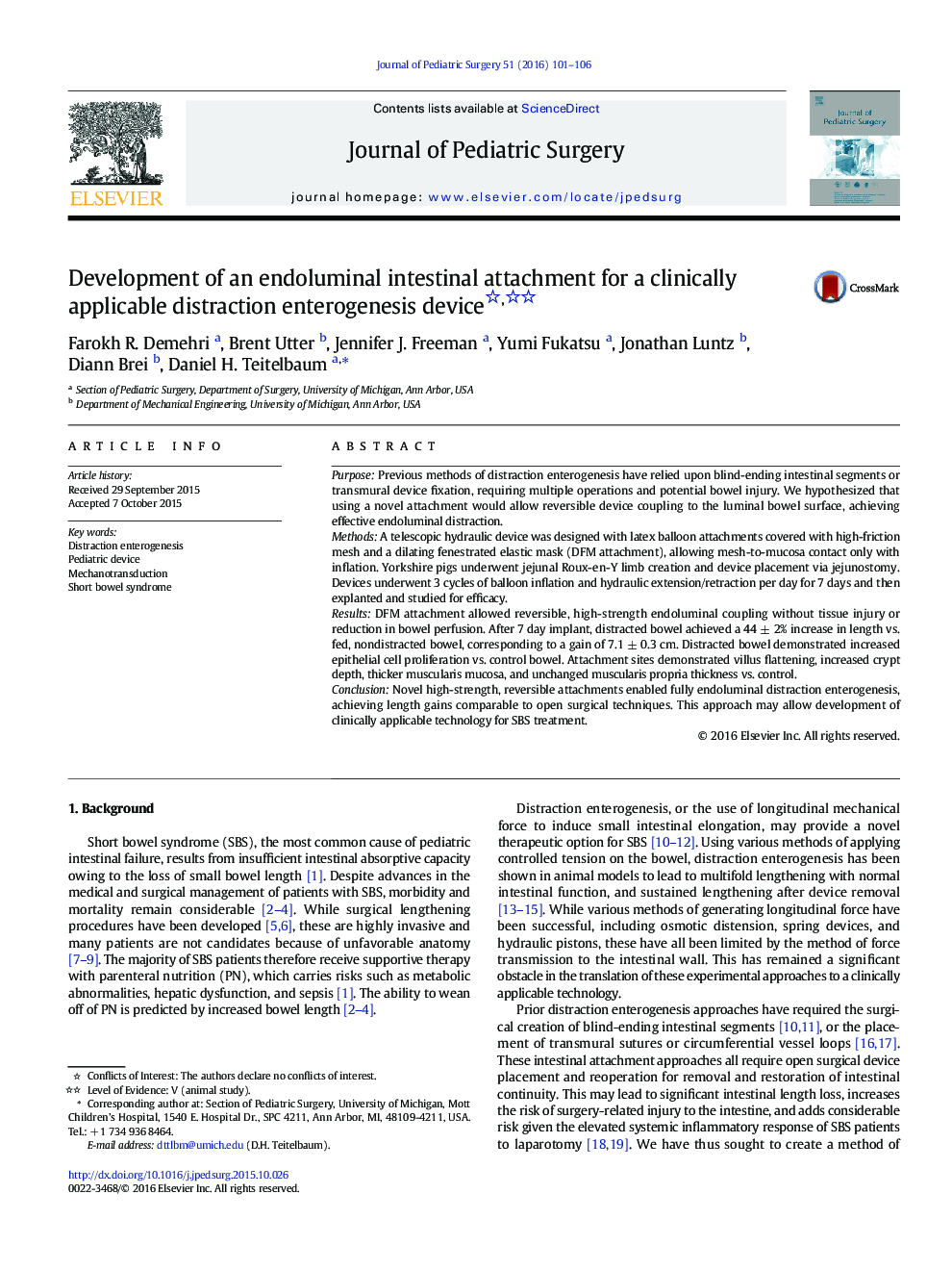| Article ID | Journal | Published Year | Pages | File Type |
|---|---|---|---|---|
| 4154874 | Journal of Pediatric Surgery | 2016 | 6 Pages |
PurposePrevious methods of distraction enterogenesis have relied upon blind-ending intestinal segments or transmural device fixation, requiring multiple operations and potential bowel injury. We hypothesized that using a novel attachment would allow reversible device coupling to the luminal bowel surface, achieving effective endoluminal distraction.MethodsA telescopic hydraulic device was designed with latex balloon attachments covered with high-friction mesh and a dilating fenestrated elastic mask (DFM attachment), allowing mesh-to-mucosa contact only with inflation. Yorkshire pigs underwent jejunal Roux-en-Y limb creation and device placement via jejunostomy. Devices underwent 3 cycles of balloon inflation and hydraulic extension/retraction per day for 7 days and then explanted and studied for efficacy.ResultsDFM attachment allowed reversible, high-strength endoluminal coupling without tissue injury or reduction in bowel perfusion. After 7 day implant, distracted bowel achieved a 44 ± 2% increase in length vs. fed, nondistracted bowel, corresponding to a gain of 7.1 ± 0.3 cm. Distracted bowel demonstrated increased epithelial cell proliferation vs. control bowel. Attachment sites demonstrated villus flattening, increased crypt depth, thicker muscularis mucosa, and unchanged muscularis propria thickness vs. control.ConclusionNovel high-strength, reversible attachments enabled fully endoluminal distraction enterogenesis, achieving length gains comparable to open surgical techniques. This approach may allow development of clinically applicable technology for SBS treatment.
